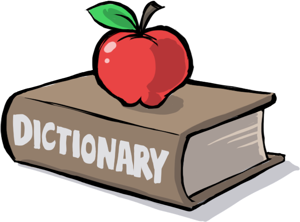As children are referred to Special Education and begin receiving services, parents may be unfamiliar with the terms and acronyms that are specific to the field of Special Education. The following is a guide to some of the terms, some that are used statewide, others which are specific to Windsor Locks.
 §§§§§§§§§§§§§§§§§§§§§§§
§§§§§§§§§§§§§§§§§§§§§§§
NCLB No Child Left Behind
On January 8, 2002, President Bush signed into law the No Child Left Behind Act of 2001 (NCLB). This new law represents his education reform plan and contains the most sweeping changes to the Elementary and Secondary Education Act (ESEA) since it was enacted in 1965. It changes the federal government's role in kindergarten-through-grade-12 education by asking America's schools to describe their success in terms of what each student accomplishes. The act contains the President's four basic education reform principles: stronger accountability for results, increased flexibility and local control, expanded options for parents, and an emphasis on teaching methods that have been proven to work.
IDEA Individuals with Disabilities Act
In 1996 the Federal government passed this law to ensure access to a free and appropriate public education for all students with disabilities.
SAT Student Assistance Team
This is the first step in the intervention process within the school. Teachers, staff, and / or parents may make a referral. A team consisting of an administrator, guidance counselor, social worker, nurse and teacher collect data and make recommendations, which may lead to a PPT or 504 meeting.
PPT Planning and Placement Team
Each local education agency meets with parents to discuss their child’s educational progress. Team members include: parents, student (if appropriate), school administrator, a regular education teacher, special education teacher, guidance counselor, social worker and nurse.
IEP Individualized Educational Program
This document is developed during the PPT to define the student’s educational program. It is a statement of the Special Education and related services, as well as, any supplementary aids and services that are to be provided to the child, or on behalf of the child. Included are any modifications or supports the school personnel will provide for the child.
504 Americans with Disabilities Act
A Civil Rights Law, which applies to all individuals who have “a physical or mental impairment which substantially limits a major life activity”, Students can receive related services under section 504, even if they are not provided any special education.
FBA Functional Behavioral Assessment
This is a process of looking at the relationship between behavior and environment to develop an understanding of the behavior. It does not constitute a comprehensive evaluation; it only focuses on the behavior of concern. A variety of formal and informal methods are used to gather data: interviews, observations, checklists, review of records, and medical information.
BIP Behavior Intervention Plan
IDEA requires school districts to include in the IEP appropriate strategies including positive behavioral interventions, strategies, and supports to address the behavior of a child whose actions impede his or her learning, or that of others. Components would include: background summary, behavior patterns, learning style, response to discipline, frequency and/or duration of the behavior, parental involvement, identified antecedents, and specific goals. This plan will also include who will be responsible, classroom management, and positive reinforcement strategies.
LRE Least Restrictive Environment
Each special education student is to be educated in the most appropriate environment which allows maximum interaction with non-disabled peers.